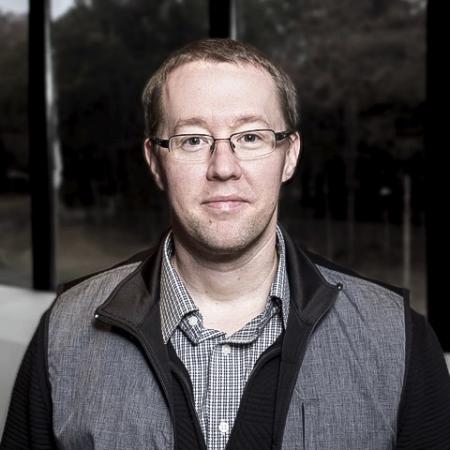
Brian Grierson
Brian Grierson
Princeton Plasma Physics Laboratory
Friday, March 16, 2018
3:00pm
Abstract: Plasma flow in the tokamak has an enormous influence on stability and confinement. Plasma rotation can be driven by auxiliary power systems that inject high energy neutral particle beams, but rotation and rotation shear can also be self-generated by turbulence when the plasma is heated. Characterizing and understanding this self-generated intrinsic plasma rotation is a challenge for both diagnosis and theoretical models. Recent advances in high temperature plasma diagnostics have enabled the first routine, direct measurement of the flow of the fuel ions in the DIII-D tokamak, and we have used these measurements to characterize the plasma rotation and compare with simulations. In this presentation, we will describe the measurement technique for determining the ion flow and intrinsic rotation phenomenology in the tokamak core, and also near the plasma boundary. Enabled by these new measurements, nonlinear gyrokinetic simulations of the core plasma have been tested by simulating the experimental plasma conditions, and reveal flows that compare remarkably well to the observations. Near the plasma boundary, a reduced theoretical model of plasma rotation has been developed and recently tested in the “high confinement” mode of tokamak operation, and also agrees remarkably well with these new measurements. Taken together, these advances in understanding plasma rotation increase our confidence in projecting to the rotation expected in the International Thermonuclear Experimental Reactor (ITER), a large tokamak under construction in southern France.
Bio: Dr. Brian A. Grierson is a Research Physicist for the Princeton Plasma Physics Laboratory at the DIII-D tokamak operated by General Atomics in San Diego, CA. Brian graduated from the University of Wisconsin-Madison (2004) with a B.S. from the AMEP Program, and worked as an undergraduate with the University of Wisconsin-Madison Physics Department Plasma Physics Group on the liquid sodium dynamo and rotating wall machine. After graduating from UW, Brian accepted the Ph.D. track in Applied Physics at Columbia University in New York, NY. After completing the first year of graduate studies, Brian received his M.S. in Applied Physics (2005). Brian continued his doctoral work under Professor Michael E. Mauel in the field of Plasma Physics, and successfully defended his Ph.D. on March 26, 2009 with the dissertation title “Interchange Turbulence in a Dipole-Confined Plasma”. Brian graduated on May 20, 2009 with a Ph.D. in Applied Physics and Applied Mathematics, with distinction. Having completed the doctoral degree at Columbia University, Brian accepted the position of Associate Physicist at Princeton University. His work as a Princeton University associate researcher was performed in San Diego, CA on charge exchange measurements on the DIII-D tokamak, and continued as Staff Physicist. In May 2014, Brian was granted a DOE Early Career Research Program award for his proposal “Exploration of main-ion properties at the boundary of fusion reactors” to develop a main-ion charge-exchange diagnostic suitable for the H-mode pedestal and study the transport of particles, energy and momentum in the main-ion channel. In the fall of 2016 Brian was became Research Physicist in the ITER and Tokamaks Department. In recognition of Brian’s research contributions, he was awarded the Kaul Foundation Prize for Excellence in Plasma Physics Research and Technology Development in 2017 by Princeton University “For groundbreaking studies in deuterium charge exchange spectroscopy, leading to the first routine measurement of main ion flow in a fusion plasma.” Brian continues his research and contributions to the field by mentoring junior scientists and leading research activities on the DIII-D tokamak in San Diego.